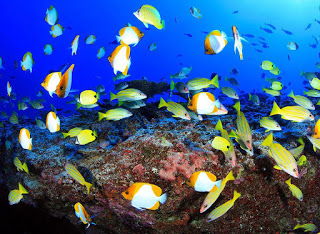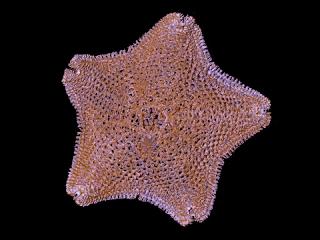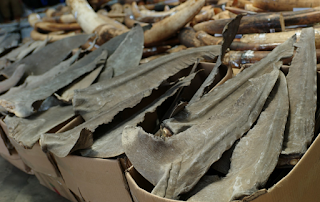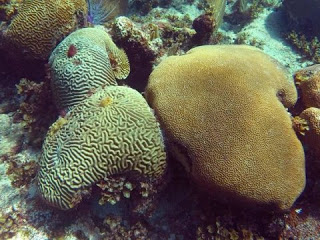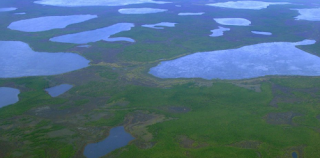Salesforce CEO Leads by Example, California Holds Global Climate Summit, Extinction in Australia, Shark Fin Battle, Jamaica Ditches Plastic, Straws Suck in California and More.
Marc Benioff, the CEO of Salesforce, is fond of saying that “the business of business is improving the state of the world.” Benioff and Salesforce have put these words into action. At last week’s Global Climate Action Summit, Salesforce led the Step Up Declaration, a series of commitments by several businesses (including Lyft, Cisco, and Bloomberg) to engage in actions that will greatly reduce their greenhouse gas emissions by 2020.
2. Ocean Issues Top Issue at California Global Climate Action Summit
 The Ocean-Climate Agenda debuted at the ongoing Global Climate Action Summit earlier today, with a focus on the role oceans play in adapting to and mitigating the consequences of climate change. “We need a safe ocean for economic reasons, cultural reasons, and for our children to have a place to grow up in and thrive in,” said Mark Magaña, founding president and CEO of GreenLatinos. By absorbing 30% of the carbon dioxide that humans produce each year and over 90% of human-generated heat, the world’s oceans have demonstrated their irreplaceable capacity for buffering the effects of climate change.
The Ocean-Climate Agenda debuted at the ongoing Global Climate Action Summit earlier today, with a focus on the role oceans play in adapting to and mitigating the consequences of climate change. “We need a safe ocean for economic reasons, cultural reasons, and for our children to have a place to grow up in and thrive in,” said Mark Magaña, founding president and CEO of GreenLatinos. By absorbing 30% of the carbon dioxide that humans produce each year and over 90% of human-generated heat, the world’s oceans have demonstrated their irreplaceable capacity for buffering the effects of climate change.
3. Australia’s First Recorded Marine Extinction
We see the surface of the sea: the rock pools, the waves, the horizon. But there is so much more going on underneath, hidden from view. The sea’s surface conceals human impact as well. Today, I am writing a eulogy to the Derwent River Seastar (or starfish), that formerly inhabited the shores near the Tasman Bridge in Hobart, Tasmania. It is Australia’s first documented marine animal extinction and one of the few recorded anywhere in the world. Scientists only knew the Derwent River Seastar for about 25 years. It was first described in 1969 by Alan Dartnall, a former curator of the Tasmanian Museum and Art Gallery.
Hong Kong Study – Global shark catch levels have more than doubled since 1960 and populations of some threatened species, such as hammerhead and oceanic whitetip, have declined by over 90 percent in recent years, according to a new paper published in Marine Policy. The study, conducted by researchers from the University of Hong Kong, the Sea Around Us Initiative at the University of British Columbia and WildAid, reveals that fishing pressure on threatened shark populations has increased dramatically, and it is now more urgent than ever that consumers reject shark fin products.
Researchers may have unraveled an enduring mystery of why a population of great white sharks off the coast of California appears to migrate en masse to a large, seemingly barren stretch of ocean in the middle of the Pacific every winter and spring. A team from the Monterey Bay Aquarium and Stanford University traveled to the 160-mile-wide region halfway between Baja California and Hawaii, which has come to be known as the “White Shark Cafe,” in order to understand why this annual pilgrimage occurs, The San Francisco Chronicle reported.
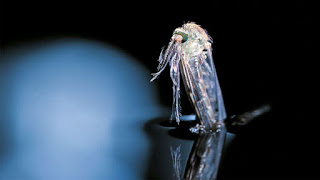 Mosquito larvae are remarkably unfussy eaters. They glide through the ponds and puddles they live in, creating currents that draw tiny particles of food into their mouths—but minuscule plastic morsels can easily slip down the hatch as well. New research shows these “microplastics” stick around in the mosquitoes’ bellies even after they emerge from the water as flying adults, putting their land predators in danger of ingesting the contaminants.
Mosquito larvae are remarkably unfussy eaters. They glide through the ponds and puddles they live in, creating currents that draw tiny particles of food into their mouths—but minuscule plastic morsels can easily slip down the hatch as well. New research shows these “microplastics” stick around in the mosquitoes’ bellies even after they emerge from the water as flying adults, putting their land predators in danger of ingesting the contaminants. 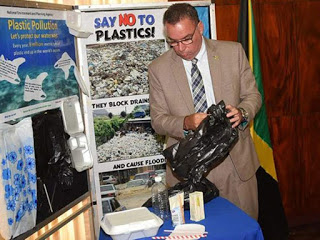 Daryl Vaz, the minister without portfolio in the Ministry of Economic Growth and Job Creation, said the ban will take effect from 1 January 2019 and will be part of an international effort to reduce pollution. The ban extends to the import, manufacture and distribution of plastic bags smaller than 24×24 inches (60x60cm), including black “scandal bags”, common in Jamaica and apparently named because the color prevents others from seeing the scandalous contents within.
Daryl Vaz, the minister without portfolio in the Ministry of Economic Growth and Job Creation, said the ban will take effect from 1 January 2019 and will be part of an international effort to reduce pollution. The ban extends to the import, manufacture and distribution of plastic bags smaller than 24×24 inches (60x60cm), including black “scandal bags”, common in Jamaica and apparently named because the color prevents others from seeing the scandalous contents within. Environmental authorities in Mexico say they have denied permits for a proposed hotel near one of Mexico’s most important sea turtle nesting beaches on the Caribbean. The 520-room hotel project would have erected 23 buildings and an artificial lake on property just inland from the Xcacel beach, north of the resort of Tulum. The federal Environment Department said in a statement late Xcacel, Monday the project could threaten Xcacel, and called it “the site with the largest observed nesting of sea turtles on the entire Yucatan Peninsula.”
Environmental authorities in Mexico say they have denied permits for a proposed hotel near one of Mexico’s most important sea turtle nesting beaches on the Caribbean. The 520-room hotel project would have erected 23 buildings and an artificial lake on property just inland from the Xcacel beach, north of the resort of Tulum. The federal Environment Department said in a statement late Xcacel, Monday the project could threaten Xcacel, and called it “the site with the largest observed nesting of sea turtles on the entire Yucatan Peninsula.”
Researchers have long questioned what impact climate change has on the rate at which corals are growing and building reef habitats in the Florida Keys. A new study from the University of North Carolina at Chapel Hill explored this topic, finding both good and bad news. The rate of coral skeletal growth in the Florida Keys has remained relatively stable over time, but the skeletal density of the region’s corals is declining, possibly due to ocean acidification.
Editor’s Note: Anything affecting climate on a global scale also affects the oceans. Melting permafrost will significantly cause a rise in CO2 levels, causing more permafrost to melt leading to ocean temperatures increasing and ocean levels rising.
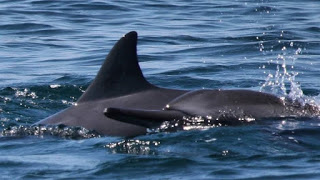 Each year, the level of sound caused by humans increases in the world’s oceans. This noise—from a host of sources, including shipping, military exercises, and oil and gas industry activity—disturbs marine life, including fish, sea turtles, invertebrates, and mammals. Rob Williams—a 2015 Pew marine fellow who is a marine conservation scientist with Oceans Initiative, a nonprofit dedicated to researching and protecting marine life—studies how noise affects ocean animals and what can be done to lessen that impact.
Each year, the level of sound caused by humans increases in the world’s oceans. This noise—from a host of sources, including shipping, military exercises, and oil and gas industry activity—disturbs marine life, including fish, sea turtles, invertebrates, and mammals. Rob Williams—a 2015 Pew marine fellow who is a marine conservation scientist with Oceans Initiative, a nonprofit dedicated to researching and protecting marine life—studies how noise affects ocean animals and what can be done to lessen that impact. 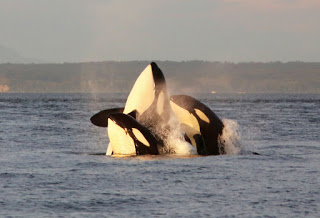
The orca calf lived for only half an hour, but the mother spent 17 days carrying its body on her nose this summer, crossing the Salish Sea from the San Juan Islands into Canadian waters and back in a visceral display of animal grief that captivated whale watchers around the globe. Tahlequah, also known as J35, was far from the first mother to grieve. Her population of southern resident orcas hasn’t seen a successful birth in three years. Over the last two decades, three-quarters of their calves have died.
———————————————–

